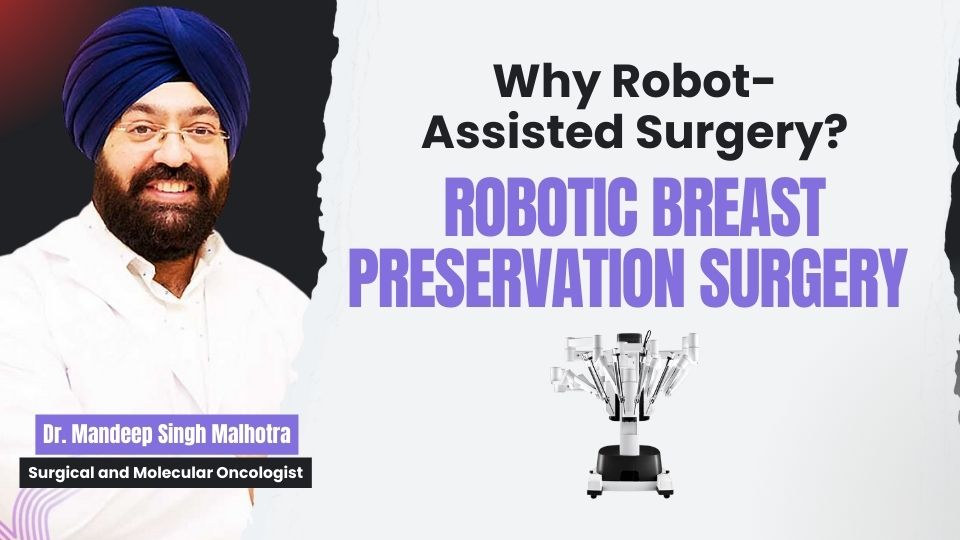Authored By Dr. Mandeep Singh Malhotra
Breast cancer surgery is undergoing a transformational shift — one that balances oncological safety with cosmetic and sensory outcomes. At the forefront of this evolution is robot-assisted breast surgery, a cutting-edge technique focused on functional breast preservation.
What Is Functional Breast Preservation?
Traditionally, breast cancer surgery has prioritized tumor clearance, sometimes at the cost of form and function. Today, we’re moving toward a more holistic approach. Functional breast preservation aims to retain not only the breast’s natural shape and appearance — including the overlying skin and nipple — but also its sensation. The goal is to deliver optimal cancer treatment while maintaining the patient’s quality of life.
Why Robot-Assisted Breast Surgery?
Robotic surgery brings unparalleled precision, dexterity, and visual clarity, allowing for a minimally invasive approach through strategic incisions such as:
• Lateral skin incisions
• Inframammary folds
• Circumareolar access
This approach enables us to perform:
• Mastectomy (complete breast removal)
• Partial or limited resections depending on tumor characteristics
The robotic system offers magnified 3D vision and tremor-free movements, enhancing safety and surgical finesse.
The result? Better cosmetic outcomes and fewer complications.
Firefly Technology: Seeing the Invisible
One of the most significant advancements in robotic surgery is Firefly® fluorescence imaging. This powerful tool helps us clearly distinguish between cancerous and healthy tissue during surgery. It allows for:
• Precise tumor resection with no cancer cells left behind
• Preservation of healthy tissue, maintaining the breast’s shape and sensation
By reducing both over-resection and under-resection, Firefly ensures oncological completeness without compromising aesthetics or function.
Clinical Experience and Outcomes
We have successfully performed robot-assisted breast surgery in over 30 patients with consistently positive outcomes:
• 100% margin-negative resections (no cancer cells at the tissue edges)
• Zero cases of skin necrosis or nipple darkening
• Sensory preservation achieved in all patients
These outcomes highlight the safety and efficacy of the robotic approach, especially in preserving patient dignity and confidence during a vulnerable phase of their lives.
Who Can Benefit?
This technique is ideally suited for:
• Early-stage breast cancer patients where the skin and nipple are not involved
• Locally advanced breast cancer patients who have responded well to chemotherapy or immunotherapy
Each patient undergoes thorough evaluation to determine suitability for robotic functional preservation.
Why This Approach Matters?
Breast surgery is more than a medical procedure — it’s a deeply personal journey. For many women, the breast symbolizes identity, femininity, and self-esteem. We believe that treating cancer should not come at the cost of a woman’s physical and emotional well-being.
Through robot-assisted functional breast preservation, we aim to:
• Minimize scarring and deformity
• Preserve natural tissue and sensation
• Maintain the highest standards of cancer clearance
This approach is less invasive, less morbid, and more mindful of the long-term quality of life.
Looking Ahead
As we continue to advance the field of robotic breast surgery, our early results affirm that this is not just a new technique — it’s a new standard of care. One that integrates the best of surgical innovation with compassionate, patient-centered treatment.
At the core of this evolution lies a simple truth: the best surgical outcomes go beyond survival — they empower women to live fully, confidently, and without compromise.
Dr. Mandeep Singh Malhotra
Director, Head, Neck & Breast Oncoplasty
CK Birla Hospital, Punjabi Bagh, New Delhi

